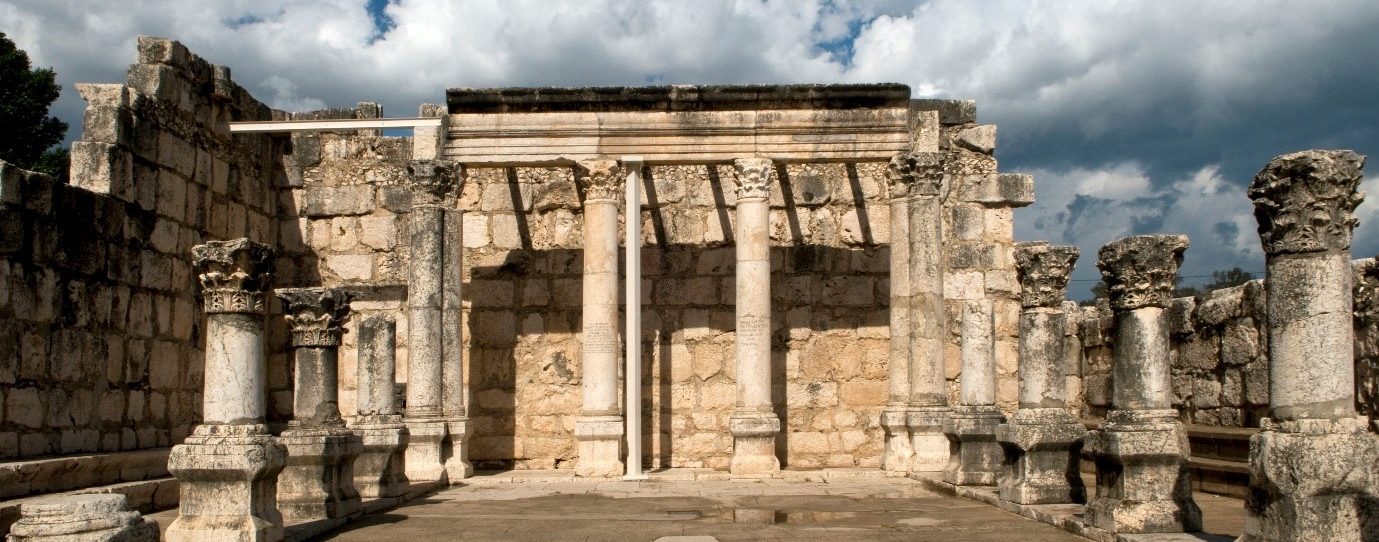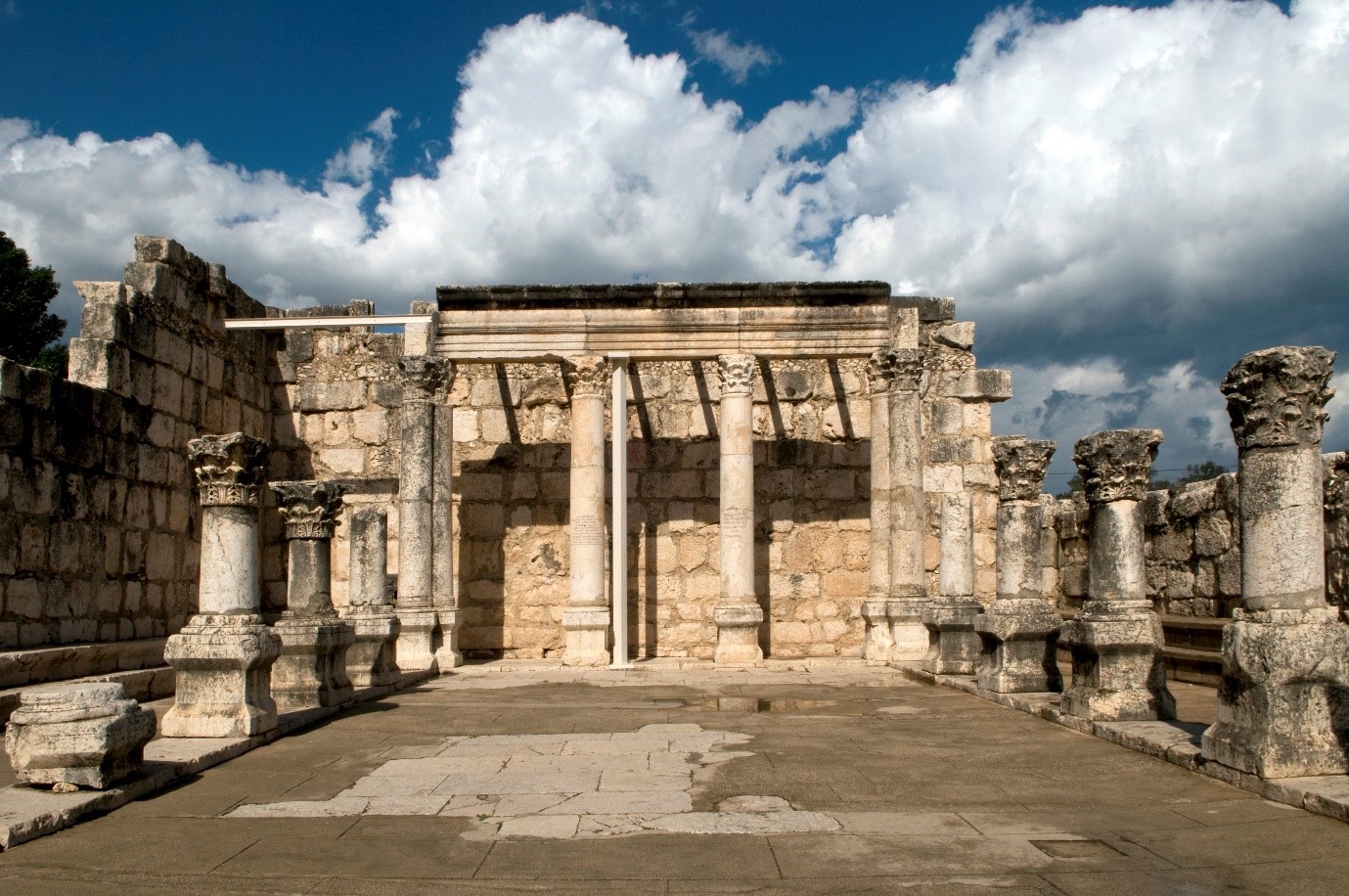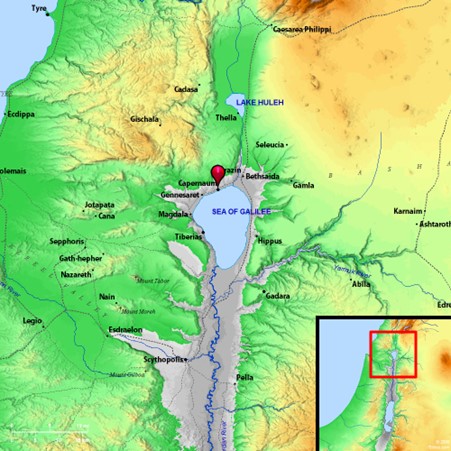
An A-Z of Places Jesus Visited
And came down to Capernaum, a city of Galilee, and taught them on the sabbath days.
Luke 4v31
Some areas of the world seem to be privileged more than others. Certain locations are surrounded by beautiful scenery, such as many coastal towns and villages surrounding the Mediterranean Sea or those within the Alps. Some cities are blessed with stunning architecture or historical artefacts. However, the small town of Capernaum, on the north shore of the Sea of Galilee,1 may be the most privileged location in the history of planet. Capernaum, probably named after an earlier resident the prophet Nahum. Along with Bethsaida and Chorazin, Capernaum has been described as the evangelical triangle. It is in these three places that the Lord Jesus spent much of His public ministry, teaching and carrying out many of His most amazing miracles. In one gospel we even read that Capernaum was ‘His own city’ possibly because He took up residence there.2
Now a ruin, in the first century AD this fishing village stretched out over several miles along the shore of the Sea of Galilee, to this day, a sea rich with fish. Capernaum today is an archaeological park containing many historical artefacts. One of the most notable structures is a 4th century synagogue made from white limestone along with several ornate columns from the building. At the lowest levels of this structure are layers of local black basalt rock on which the original synagogue was built; the same synagogue which existed at the time of the Lord Jesus.
The original synagogue may have been that built by the Roman centurion mentioned in several gospel accounts, for example in Luke 7 v1-10.3 He was one of two people commended by the Lord Jesus for their great faith.4 More than likely this man had heard some of some remarkable events that had happened to a notable citizen of the town. In a small town like Capernaum news travelled fast. Earlier5 a nobleman from Capernaum had travelled the long twenty-four mile journey to visit the Lord Jesus in Cana towards the east of the town. He besought Jesus for the life of his son who was near the point of death.6 Through this experience the nobleman came to appreciate that the Lord Jesus was instantaneously able to completely heal his son at a distance, through only the spoken words of his mouth: ‘Go thy way, for thy son liveth’.7

Ruins of the ancient Great Synagogue at Capernaum
https://upload.wikimedia.org/wikipedia/commons/f/fb/Sites_of_Christianity_in_the_Galillee_-_Ruins_of_the_ancient_Great_Synagogue_at_Capernaum_%28or_Kfar_Nahum%29_on_the_shore_of_the_Lake_of_Galilee%2C_Northern_Israel.jpg
The Roman centurion on hearing of this event perhaps was struck with the power of the spoken word of the Lord Jesus over disease. Like the nobleman he too had reached a crisis point, with his own servant near to death. This servant was very dear to him and may have been his personal attendant.8 The centurion sent some respected men from the Jewish community to request for the Lord Jesus to heal his servant. As the Lord Jesus approached his house, the centurion expressed his appreciation of the authority of the Lord Jesus. Considering himself unworthy for the Lord Jesus to enter his house, the centurion passed on a message through some friends, ‘say in a word, and my servant shall be healed’, Luke 7 v7. As a centurion he was a man of authority, expressed in his own words: ‘I say unto one ‘go’ and he goeth, and to another ‘come’ and he cometh’. Faith is often misunderstood. Here faith is based on an understanding of the greatness of the Lord Jesus and the authority of His word. The person of the Lord Jesus Christ and His word are utterly reliable; they can be depended upon for our lifetime and beyond it.
The last link in this chain of events at Capernaum, relates to a ruler of a synagogue. It is an event taking place in possibly the same synagogue built by the centurion.9 The ruler of the synagogue’s name was Jairus, and he too had experienced a personal crisis. His only daughter, at the age of twelve, was at the point of death.10 More than likely Jairus had heard of these two events, of the nobleman’s son and centurion’s servant being healed by the Lord Jesus without Him even being present. Although a respected religious man, Jairus did not have the faith of the nobleman or the centurion. Falling down at the feet of the Lord Jesus, he urged him to come to his house as soon as possible.11 Delayed on the way by the healing of a lady with a blood disorder they appeared to have arrived too late as Jairus’s daughter had already died. As was the custom, there was a commotion at this news with much wailing and noise. Unflustered and unrushed, the Lord Jesus took command of the situation, removing everyone from the room the young girl was in except for Jairus and his wife, Himself and three of his disciples. In a tender moment, the Lord Jesus took the girl by the hand and said in Aramaic ‘talitha cumi’,12 meaning ‘little woman arise’. Immediately the young girl rose from the dead and was returned to her parents. Jesus asked them to provide something for her to eat.
The faith of Jairus was wavering and weak but he had witnessed the greatest of these three miracles. Jairus had witnessed the Lord Jesus having authority, not only over disease, but over death itself. The Bible says that the Lord Jesus, the Son of God, became a perfect man, ‘that through death he might destroy him that had the power of death, that is, the devil; and deliver them who through fear of death were all their lifetime subject to bondage’, Hebrews 2 v14-15. How good to know that because Lord Jesus Christ laid down His life at the cross and is risen from the dead, He has dealt with the problem of sin once and for all. He alone is able to release us from the fear of death. Through His death and resurrection, the Lord Jesus Christ has conquered death, and God now offers eternal life to all who trust in His Son.
2 Matthew 9 v1
3 Luke 7 v5 mentions that he may have provided funding or other additional support in building a synagogue in Capernuam
4 The other is the Syrophoenician women mentioned in Matthew 15 v21-28, see verse 28.
5 John 4v54 implies that this was the second public miracle Jesus performed and hence came before the miracle described in Luke 7 v1-10
6 John 4 v46-54
7 John 4 v50
8 This is implied by the use of a Greek word ‘pais’ or child, in Matthew 8 v6 whereas other gospels make it clear that this sick man was a slave (Greek word ‘doulos’).
9 As a large town there may have been more than one synagogue
10 Some have suggested that these common infections, often in younger people could have been caused by malarial mosquitos which would have thrived in subtropical climate around Galilee.
11 The account is found in Matthew 9 v18-26, Mark 5v21-43 and Luke 8 v40-56.
12 Mark 5 v41.
